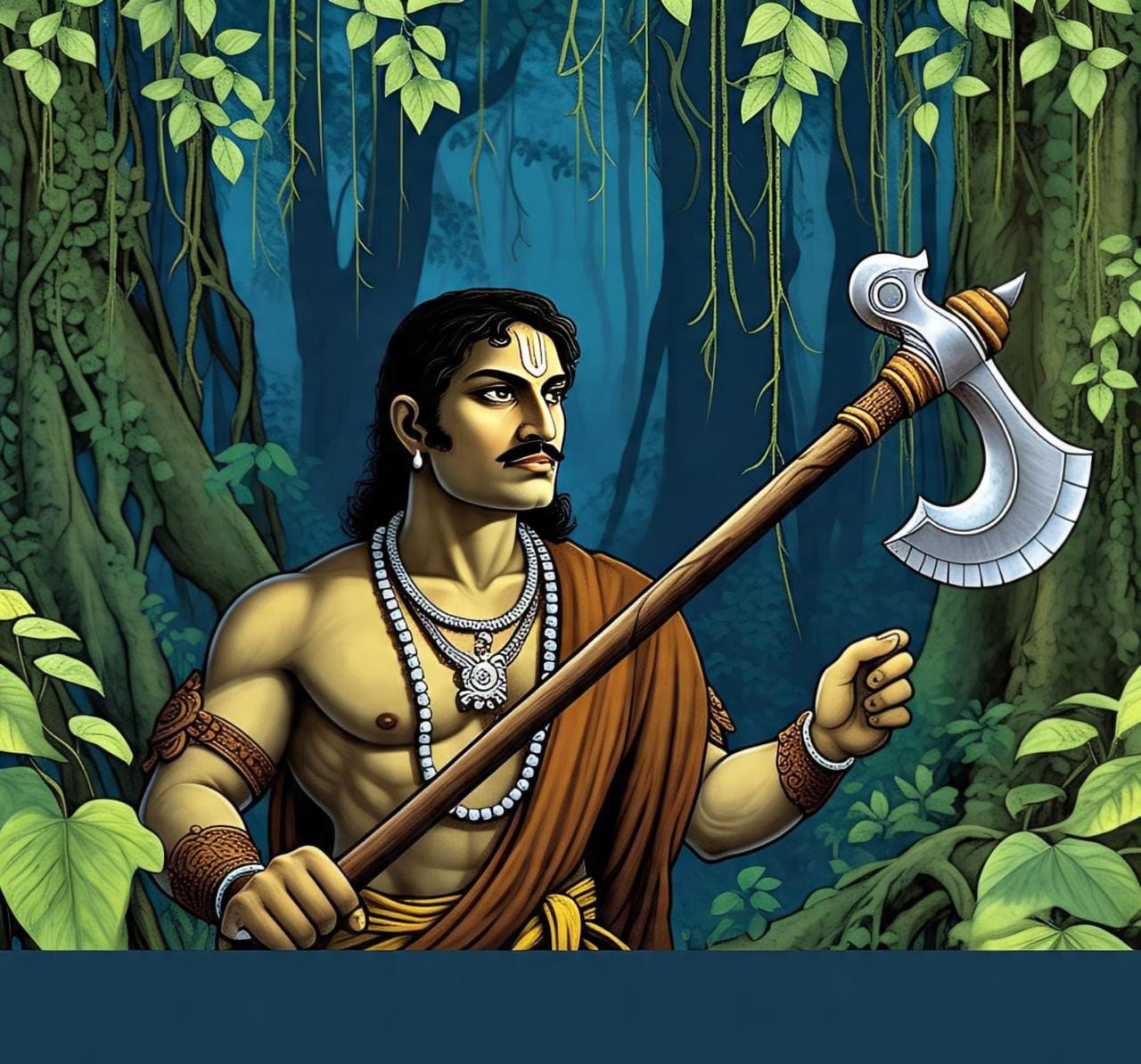Parashurama’s Secret Presence in the Mahabharata – The Silent Warrior

We all know that the Mahabharata is a story full of brave warriors, wise kings, and powerful gods. But did you know that one of Lord Vishnu’s avatars, Parashurama, also appears in the Mahabharata—but in a secret and special way?
Parashurama is one of the Dashavatara—the ten main avatars of Vishnu. He was a warrior-sage with a fierce axe and a calm heart. Though he doesn’t fight in the war of Mahabharata, he plays an important role behind the scenes.
Let’s uncover the story of Parashurama’s secret presence in this great epic!
Who is Parashurama?
Parashurama is the sixth avatar of Lord Vishnu. He was born in the age of the mighty kings, long before the Mahabharata war.
He was both a sage and a warrior. His name comes from “Parashu,” which means axe. He carried an axe given by Lord Shiva himself.
Parashurama’s mission was to protect good people and punish the arrogant and cruel Kshatriya kings who had become wicked. He fought many battles to bring justice to the world.
Why Didn’t Parashurama Fight in the War?
Even though he was a great warrior, Parashurama did not take part in the battle of Kurukshetra. That’s because he had taken a vow to never again fight after completing his task of punishing the wicked kings.
By the time of the Mahabharata, he had become a wise teacher, living a quiet life in the forests and mountains.
But that doesn’t mean he wasn’t involved!
Parashurama the Teacher
Parashurama trained some of the most powerful fighters in the Mahabharata. His students were warriors who later played big roles in the story.
Here are two of his most famous students:
1. Bhishma – The Noble Grandfather
Bhishma, one of the greatest and most respected warriors of the Mahabharata, learned from Parashurama.
But there’s a twist!
Later, Parashurama and Bhishma fought each other! Yes, that’s right.
When Amba, a princess, asked Parashurama to help her take revenge on Bhishma, he agreed. Even though Bhishma was his student, Parashurama believed in justice.
They fought a mighty battle that lasted for 23 days, but neither of them won. At the end, the gods stopped the fight, and Parashurama left, keeping his promise not to destroy his student.
2. Karna – The Generous Warrior
Karna, known for his bravery and kindness, also went to Parashurama to learn the art of war. But he had a secret.
Parashurama only taught Brahmins (priests and sages). Karna was a Kshatriya (warrior), but he lied and said he was a Brahmin to get training.
Parashurama taught him everything. But one day, while resting with his head on Karna’s lap, a bee stung Karna. Karna didn’t move, even though it hurt badly, because he didn’t want to wake his teacher.
When Parashurama woke up and saw the blood, he realized Karna was not a Brahmin—only a warrior could bear such pain.
Angry at the lie, Parashurama cursed Karna. He said that in his most important battle, he would forget the knowledge he had learned. This curse later became one of the reasons why Karna lost to Arjuna in the war.
Parashurama’s Wisdom Behind the Scenes
Even though Parashurama wasn’t on the battlefield, his teachings and curses changed the course of the Mahabharata.
- He helped create great warriors like Bhishma and Karna.
- He reminded people that honesty and dharma (righteousness) matter more than strength.
- His presence in the background showed how past actions shape future events.
What We Learn from Parashurama’s Story
- A true hero is not just one who fights, but one who teaches and guides.
- Lying can lead to big problems, even if it is for a good reason.
- Courage and calmness are both important, just like Parashurama showed.
Parashurama is like the silent spark in the Mahabharata. He didn’t fight in the war, but his story flowed through it like an invisible river.
Parashurama’s role in the Mahabharata is hidden, but powerful. He teaches us that sometimes, the quietest people make the biggest difference.